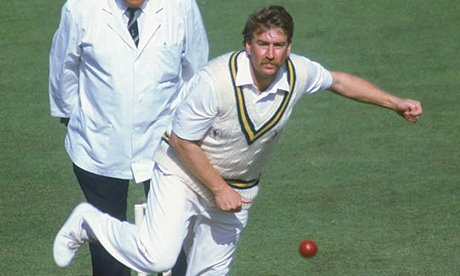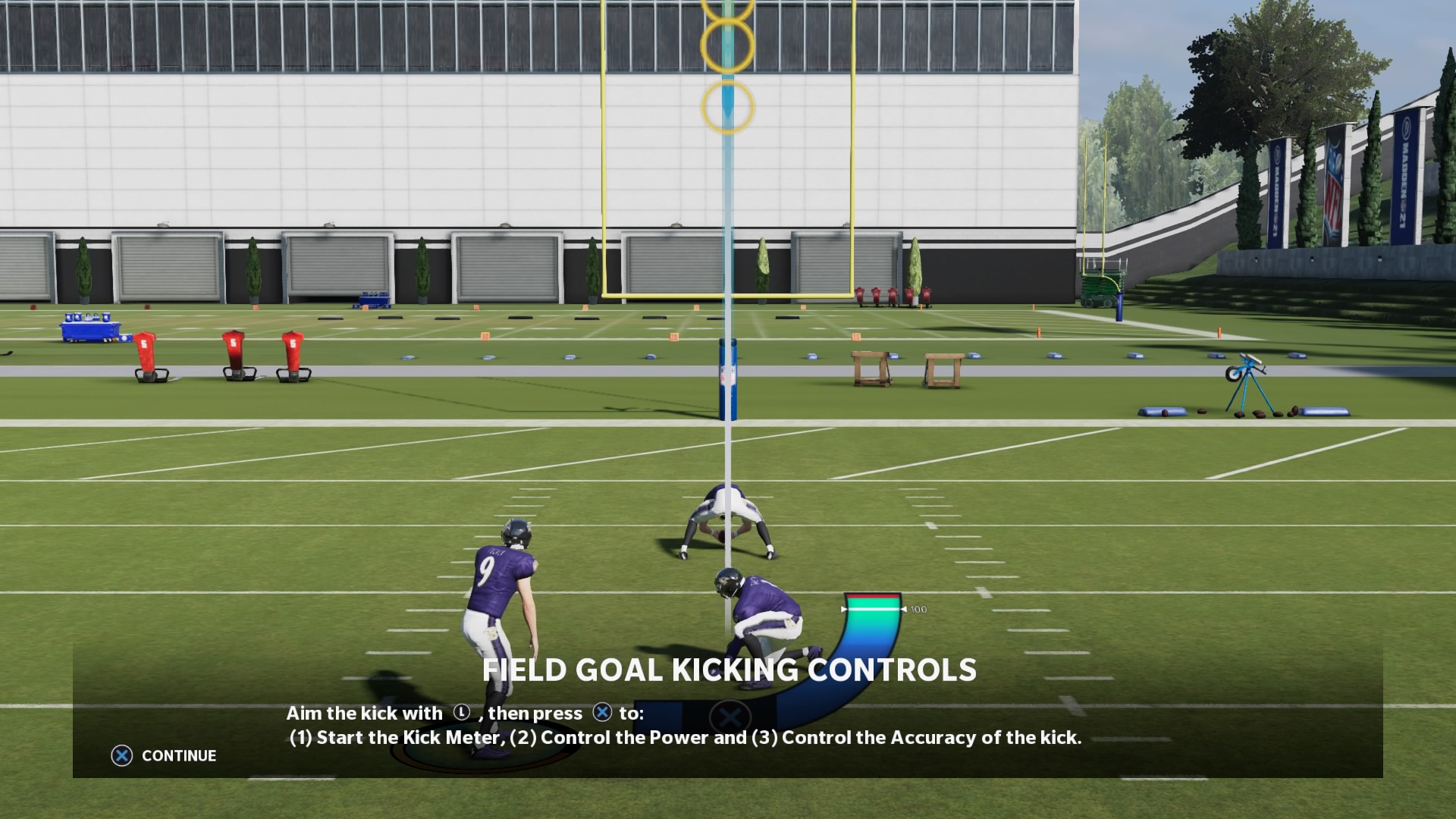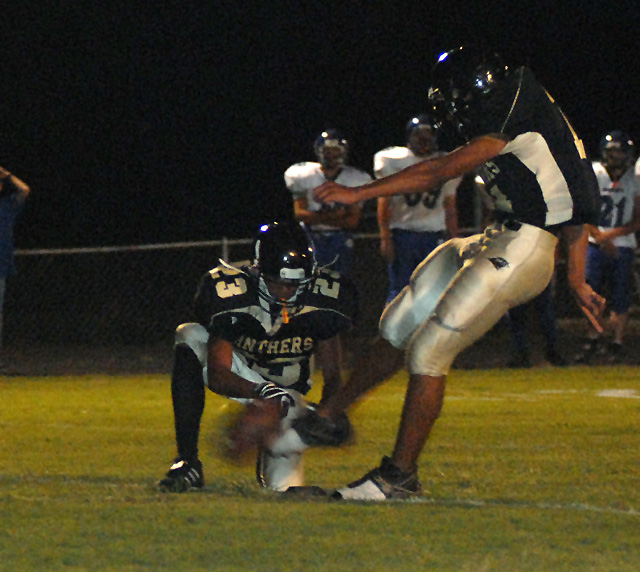Have you ever wondered what role the arm plays in the intense world of rugby league? How does it contribute to the dynamic gameplay and strategies on the field?
In this article, we will go over the arm’s anatomy, its crucial role in tackling, passing, and carrying the ball, as well as some common injuries players suffer during the course of a game.
In this article, we’ll look at the secrets behind mastering the arm techniques required for success in rugby league.
Understanding the Concept of “Arm” in Rugby League

In the dynamic world of rugby league, the concept of the “arm” transcends mere physicality, weaving itself intricately into the fabric of gameplay and strategy. From the thunderous clash of tackles to the precise execution of passes, the arm serves as a conduit for players to exert their influence on the field. Understanding the multifaceted nature of the arm in rugby league is paramount for athletes seeking to elevate their performance and master the nuances of the sport.
Exploring the Significance of the Arm:
- Introduction to the Term “Arm”: At its core, the term “arm” encompasses more than just a limb; it symbolizes power, precision, and control on the rugby league battlefield.
- Various Contexts of Use: Within the realm of rugby league, the arm finds itself entwined in a myriad of contexts, from defensive maneuvers to offensive plays, showcasing its versatility and adaptability.
- Importance in Gameplay and Strategy: Beyond its physical attributes, the arm holds strategic significance, influencing team tactics and shaping the flow of the game. Whether it’s delivering bone-crushing tackles or orchestrating seamless passes, the arm is a linchpin in the pursuit of victory.
Anatomy and Execution:
Delving deeper into the realm of the arm in rugby league unveils a rich tapestry of anatomy and execution, where precision meets power in a symphony of movement.
- Structural Anatomy: Understanding the intricate anatomy of the arm provides players with insights into its capabilities and limitations, empowering them to leverage its full potential on the field.
- Tackling Techniques: From the textbook shoulder charge to the wrap-around tackle, mastering various tackling techniques hinges on harnessing the strength and dexterity of the arm.
- Passing and Receiving: The art of passing and receiving in rugby league hinges on the finesse of the arm, requiring split-second decision-making and flawless execution to outmaneuver opponents.
Strategies and Skills:
Armed with knowledge and skill, rugby league players embark on a quest for mastery, honing their craft and pushing the boundaries of possibility.
- Enhancing Arm Strength: Strengthening the arm muscles through targeted exercises and conditioning regimens lays the foundation for peak performance on the field.
- Tactical Maneuvers: Incorporating strategic maneuvers that capitalize on the arm’s capabilities can tip the scales in favor of victory, from deceptive feints to lightning-fast offloads.
- Injury Prevention and Management: Safeguarding against arm injuries through proper technique and conditioning is paramount, ensuring players remain at the top of their game throughout the rigors of the season.
Embracing the Arm’s Legacy:
As players and fans alike bear witness to the awe-inspiring displays of athleticism on the rugby league stage, the arm stands as a testament to the enduring spirit of competition and camaraderie.
- Celebrating Excellence: From legendary tackles etched in the annals of history to breathtaking passes that defy the laws of physics, the arm embodies the relentless pursuit of excellence in rugby league.
- Inspiration and Aspiration: Aspiring athletes draw inspiration from the giants of the game, setting their sights on reaching new heights of achievement fueled by the indomitable spirit of the arm.
In the grand tapestry of rugby league, the arm emerges as a symbol of strength, skill, and determination, uniting players and fans in a shared passion for the game. As the storied legacy of the arm continues to unfold, its impact reverberates far beyond the confines of the field, leaving an indelible mark on the hearts and minds of all who bear witness to its majesty.
Anatomy of the Arm in Rugby League
In the realm of rugby league, where precision and power collide on the field, understanding the anatomy of the arm is paramount for players seeking to optimize their performance. The arm, a marvel of biomechanical engineering, comprises a complex interplay of muscles, tendons, and bones, each contributing to its remarkable functionality. Let’s delve into the intricate details of the arm’s anatomy and its pivotal role in the context of rugby league:
Unveiling the Structural Marvel:
- Overview of Arm Structure: The arm is composed of three primary segments: the upper arm, forearm, and hand, each housing a network of muscles and joints that facilitate movement and dexterity.
- Muscle Anatomy: At the core of arm function lies a constellation of muscles, including the biceps, triceps, and deltoids, each playing a distinct yet interconnected role in powering tackles, passes, and ball carries.
- Joint Mechanics: From the ball-and-socket joint of the shoulder to the hinge joints of the elbow and wrist, the arm’s intricate network of joints enables a wide range of motion essential for executing dynamic rugby league maneuvers.
Muscular Mastery:
- Key Muscles for Arm Movements: In the context of rugby league, certain muscles take center stage, driving the explosive actions required for tackling opponents, launching precision passes, and securing possession of the ball.
- Biceps and Triceps Dynamics: The biceps, located on the front of the upper arm, flexes the elbow and aids in forearm rotation, while the triceps, situated on the back of the upper arm, extends the elbow, providing essential power for tackling and passing.
- Deltoid Functionality: The deltoid muscle, comprising three distinct heads, contributes to shoulder stability and facilitates arm abduction and rotation, crucial for executing tackles and fending off defenders.
Arm’s Integral Role in Gameplay:
In the fast-paced arena of rugby league, the arm serves as both a conduit for action and a shield against adversaries, shaping the outcome of matches and defining the prowess of players.
- Tackling Precision: Harnessing the strength and coordination of the arm muscles, players execute bone-jarring tackles, leveraging momentum and technique to bring opponents to the ground with authority.
- Passing Proficiency: Whether unleashing a bullet pass to a teammate or executing a deft offload in traffic, the arm’s agility and power underpin the precision required for seamless ball movement.
- Ball Carrying Mastery: With the ball cradled in the crook of the arm, players navigate the field with finesse, warding off would-be tacklers and maintaining possession through a combination of strength, balance, and agility.
Embracing the Arm’s Potential:
As rugby league continues to captivate audiences worldwide with its blend of athleticism and strategy, the arm remains a symbol of resilience, adaptability, and sheer determination. By honing their understanding of arm anatomy and harnessing its full potential, players can elevate their performance to new heights, leaving an indelible mark on the sport’s storied legacy. So, as the roar of the crowd reverberates across the stadium, let the arm be your steadfast companion on the journey to rugby league greatness.
Tackling Techniques and the Arm
In the fiercely competitive arena of rugby league, mastering tackling techniques is a prerequisite for success, and the role of the arm in executing these maneuvers cannot be overstated. As players engage in the art of tackling, they must navigate a diverse array of techniques tailored to the dynamic demands of the game. Let’s dissect the nuances of tackling techniques and the pivotal role played by the arm:
Exploring Tackling Techniques:
- Form Tackling: This fundamental technique emphasizes wrapping the arms securely around the ball carrier’s legs or torso, leveraging the body’s momentum to bring them to the ground with controlled force.
- Shoulder Charge: A hallmark of rugby league aggression, the shoulder charge involves driving the shoulder into the opponent’s chest or upper body, aiming to dislodge the ball or halt their progress with sheer impact.
- Grappling Tackle: Employed in close-quarter combat situations, the grappling tackle entails seizing the opponent’s upper body or arms, restricting their movement and forcing them into submission.
Leveraging the Arm’s Strength:
- Initiating Contact: As players execute tackles, the arm serves as the primary point of contact, guiding the trajectory of the tackle and exerting pressure on the opponent’s body to disrupt their momentum.
- Wrapping Technique: Effective tackling hinges on the ability to wrap the arms securely around the ball carrier, preventing them from offloading the ball or breaking free from the tackle.
- Force Distribution: By distributing force evenly across the arm and shoulder, players can minimize the risk of injury while maximizing the impact of their tackles, ensuring both efficiency and safety on the field.
Common Mistakes to Avoid:
- Arm-Only Tackles: Relying solely on the arm to execute tackles increases the likelihood of missed tackles and exposes players to the risk of injury, as opponents can easily evade or break free from weak arm tackles.
- High Tackling: Targeting the opponent’s head or neck in tackles not only incurs penalties but also poses a significant safety risk, with the potential to cause serious injury to both players involved.
- Failure to Wrap Up: Neglecting to wrap the arms securely around the ball carrier allows them to maintain possession and continue their advance down the field, undermining defensive efforts and conceding valuable yardage.
Striving for Tackling Excellence:
As players hone their tackling techniques and refine their arm mechanics, they embody the spirit of resilience and determination that defines the essence of rugby league. By mastering the art of the tackle and leveraging the strength and precision of the arm, athletes elevate their defensive prowess and contribute to the collective success of their team. So, as the battle rages on the rugby league battlefield, let the arm be your steadfast ally in the pursuit of victory and glory.
Passing and Receiving: The Arm’s Vital Role

In the intricate ballet of rugby league, passing and receiving constitute the heartbeat of strategic gameplay, with the arm serving as the conduit through which these crucial actions flow. As players orchestrate fluid sequences of passes and deftly receive incoming balls, the arm emerges as a vital protagonist in the narrative of team coordination and offensive prowess. Let’s unravel the significance of the arm in passing and receiving, exploring the techniques and nuances that underpin these fundamental aspects of the game:
The Arm’s Significance in Passing:
- Dynamic Power Source: The arm functions as the primary mechanism for propelling the ball across the field, harnessing the player’s strength and coordination to execute precise passes that bypass defenders and find their intended targets.
- Accuracy and Control: By leveraging the arm’s dexterity and finesse, players can impart spin and velocity to the ball, ensuring that it reaches its destination with pinpoint accuracy and evades interception by opposing players.
- Strategic Vision: As players scan the field for open teammates and strategic passing lanes, the arm becomes the instrument through which their tactical insights are translated into decisive actions, setting the stage for offensive breakthroughs and scoring opportunities.
Techniques for Accurate Passing Using the Arm:
- Chest Pass: Employed in close-range situations, the chest pass involves thrusting the ball forward using both hands and the power of the arm, allowing for quick and direct distribution to nearby teammates.
- Spin Pass: Characterized by a rapid rotation of the ball in flight, the spin pass leverages the arm’s rotational motion to generate velocity and stability, enabling long-distance passes with enhanced accuracy and trajectory.
- Offload: A testament to split-second decision-making, the offload pass entails releasing the ball from the grasp of oncoming defenders, relying on the arm’s agility and timing to create scoring opportunities for supporting teammates.
Importance of the Arm in Receiving Passes Effectively:
- Soft Hands: When receiving incoming passes, the arm serves as a cushioning mechanism, absorbing the impact of the ball and ensuring a secure grip to maintain possession and initiate subsequent offensive maneuvers.
- Hand-Eye Coordination: By synchronizing hand movements with visual cues from the trajectory of the ball, players can position their arms with precision, maximizing the likelihood of successful receptions and minimizing turnovers.
- Immediate Ball Control: Upon receiving a pass, the arm facilitates rapid ball control, allowing players to transition seamlessly from reception to ball handling, whether through dribbling, passing, or shooting, thereby maintaining offensive momentum and applying pressure on the opposing defense.
In the tapestry of rugby league dynamics, where every pass and reception holds the potential to shift the tide of momentum, the arm emerges as a linchpin of strategic execution and offensive flair. By mastering the art of passing and receiving, players not only showcase their technical proficiency but also embody the collaborative spirit and collective synergy that define the essence of team sports. So, as the ball arcs through the air and finds its mark in the waiting arms of teammates, let the arm be the vessel through which victory is forged and triumph is celebrated on the rugby league battlefield.
Carrying the Ball: Arm Control and Protection
In the dynamic realm of rugby league, the art of ball carrying transcends mere athleticism, requiring a delicate balance of arm control and protection to navigate the rigors of gameplay effectively. As players assume possession of the ball and embark on strategic maneuvers across the field, the arm emerges as a cornerstone of their offensive arsenal, facilitating both the propulsion and safeguarding of the precious cargo. Let’s delve into the intricacies of ball carrying, exploring the techniques and strategies that underscore the symbiotic relationship between the arm and the ball:
Techniques for Carrying the Ball with the Arm:
- Crucial Grip: Central to effective ball carrying is the establishment of a secure grip with the arm, ensuring that the ball remains firmly nestled within the player’s grasp as they navigate through traffic and evade opposing defenders.
- Strategic Positioning: By leveraging the arm’s flexibility and range of motion, players can adjust their stance and body positioning to optimize balance and stability, mitigating the risk of fumbles or turnovers during high-pressure situations.
- Dynamic Movement: As players weave through the opposition’s defensive line, the arm serves as a pivot point for dynamic shifts in direction and acceleration, enabling seamless transitions between evasive maneuvers and forward propulsion.
Strategies for Protecting the Ball Using the Arm:
- Shielding Technique: To shield the ball from prying defenders, players can utilize the arm as a protective barrier, positioning it between the ball and the oncoming threat to maintain possession and thwart interception attempts.
- Ball Security: By maintaining a firm grip and leveraging the arm’s strength, players can minimize the risk of turnovers and strip tackles, fortifying their ball security and preserving offensive momentum in the face of defensive pressure.
- Awareness and Anticipation: Through heightened situational awareness and anticipatory instincts, players can preemptively adjust their arm positioning to anticipate incoming challenges, preempting potential turnovers and maintaining control of the ball.
Improving Arm Strength and Control for Ball Carrying:
- Targeted Training: Incorporating targeted strength and conditioning exercises into their training regimen, players can enhance arm strength and endurance, empowering them to withstand the rigors of prolonged ball carrying and outmuscle opposing defenders.
- Skill Development: By honing their ball handling skills and refining their arm mechanics through dedicated practice drills, players can elevate their proficiency in controlling and manipulating the ball, fostering greater confidence and precision in their offensive execution.
- Adaptive Techniques: Recognizing the evolving demands of the game, players must continuously adapt their ball carrying techniques to optimize performance, embracing innovation and versatility in their approach to arm-centric gameplay strategies.
In the ever-evolving landscape of rugby league, where every possession holds the potential to tip the scales of victory, the arm emerges as a steadfast ally in the pursuit of offensive dominance and strategic supremacy. By mastering the art of ball carrying and honing their arm control and protection skills, players embody the resilience and ingenuity that define the essence of elite-level competition. So, as the battle unfolds on the field of play, let the arm be your steadfast companion, guiding you toward triumph and glory in the exhilarating pursuit of rugby league excellence.
Arm Injuries in Rugby League
In the high-octane arena of rugby league, where physicality and intensity reign supreme, the risk of arm injuries looms ominously over players, threatening to sideline even the most seasoned athletes. From fractures and dislocations to ligament sprains and muscle strains, a myriad of afflictions plague the arms of rugby league warriors, underscoring the inherent dangers of the sport’s rugged nature. Let’s delve into the realm of arm injuries in rugby league, exploring common afflictions, prevention strategies, and rehabilitation tips to safeguard players against the perils of the game:
Common Arm Injuries Encountered in Rugby League:
- Fractures: Due to the impact-driven nature of rugby league, fractures are a prevalent injury, with the humerus, radius, and ulna particularly vulnerable to breakage during collisions and tackles.
- Dislocations: Shoulder dislocations are a frequent occurrence in rugby league, often resulting from forceful impacts or awkward falls that cause the shoulder joint to become displaced.
- Ligament Sprains: The ligaments surrounding the elbow and wrist joints are susceptible to sprains and tears, especially during sudden twists or hyperextensions that exceed the joint’s range of motion.
- Muscle Strains: The muscles of the arm, including the biceps, triceps, and forearm muscles, are prone to strains and overuse injuries, particularly when subjected to repetitive motions or excessive force.
Prevention Strategies for Arm Injuries:
- Strength and Conditioning: Implementing comprehensive strength and conditioning programs can fortify the muscles and ligaments of the arms, enhancing their resilience and ability to withstand the rigors of gameplay.
- Proper Technique: Emphasizing proper tackling and ball-carrying techniques can minimize the risk of arm injuries by reducing the likelihood of awkward impacts and collisions that place undue stress on the joints and soft tissues.
- Protective Gear: Equipping players with appropriate protective gear, such as padded sleeves and arm guards, can provide an additional layer of defense against impact-related injuries and abrasions.
- Warm-Up and Stretching: Prior to matches and training sessions, players should engage in dynamic warm-up exercises and targeted stretching routines to prepare the arms and surrounding musculature for the demands of physical exertion.
Rehabilitation and Recovery Tips for Arm Injuries:
- Rest and Immobilization: In the aftermath of an arm injury, rest and immobilization are essential for promoting healing and preventing further damage, with splints, slings, or casts often utilized to stabilize the affected area.
- Physical Therapy: Under the guidance of a qualified physiotherapist, players can undergo targeted rehabilitation exercises and modalities to restore strength, mobility, and function to the injured arm.
- Gradual Return to Activity: Once cleared by medical professionals, players should gradually reintegrate into training and gameplay, easing back into physical activity to prevent re-injury and allow for continued recovery.
- Monitoring and Support: Throughout the rehabilitation process, ongoing monitoring and support from medical staff, coaches, and teammates are crucial for ensuring optimal recovery and minimizing setbacks.
In the relentless pursuit of victory on the rugby league battlefield, the welfare of players must remain paramount, with proactive measures and diligent care employed to mitigate the risk of arm injuries and safeguard the health and longevity of athletes. By fostering a culture of safety, education, and proactive injury management, rugby league can continue to thrive as a testament to the resilience and fortitude of its participants, ensuring that the glory of the game endures for generations to come.
Key takeaway
Finally, the arm serves as a vital component of the game, with its many functions in various aspects of gameplay. In addition to executing precise tackles and delivering accurate passes, the arm plays a critical role in deciding the outcome of a game, influencing ball control and positioning.
Throughout this article, we’ve discussed how important it is for players to understand the anatomy of the arm, hone tackling techniques, master passing and receiving skills, and protect themselves against injuries during their rugby league careers.
As a result, whether you’re a seasoned athlete looking to fine-tune your techniques or a newcomer looking to learn the ropes, remember the crucial role the arm plays in your journey to success in the exhilarating world of rugby league. Maintain your discipline, stay mentally stable, and remember that arm on the field is your strength.
































